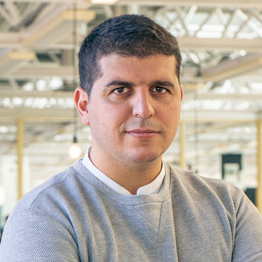09/03/2024
Published in
Diario de Navarra
Mario Galiana Liras
Architect and professor at the University of Navarra. partner founder of Atelier Atlántico.
 He is a reassuring architect who brings dignity to everyday life. Normality becomes extraordinary. Calm leads to splendor". With this statement, the president of the Pritzker Prize, Alejandro Aravena, closed the presentation of the winner of the 2024 edition, the Japanese architect Riken Yamamoto (78, Beijing). On this occasion, the award goes to an architect who works from a common architecture, for all, a consistent architecture based on people, made with people and to be enjoyed by people. The Japanese master was educated in Yokohama, where his family moved after World War II. Here he learned to distance himself from the Japanese metabolists, initiating a path that configures a much more human architecture. His projects are defined by their modular and simple constructions, where precision and subtlety are the object of conquest of space.
He is a reassuring architect who brings dignity to everyday life. Normality becomes extraordinary. Calm leads to splendor". With this statement, the president of the Pritzker Prize, Alejandro Aravena, closed the presentation of the winner of the 2024 edition, the Japanese architect Riken Yamamoto (78, Beijing). On this occasion, the award goes to an architect who works from a common architecture, for all, a consistent architecture based on people, made with people and to be enjoyed by people. The Japanese master was educated in Yokohama, where his family moved after World War II. Here he learned to distance himself from the Japanese metabolists, initiating a path that configures a much more human architecture. His projects are defined by their modular and simple constructions, where precision and subtlety are the object of conquest of space.
Yamamoto's architecture, as official document with capital letters, leaves aside egos and personal desires, proposing a look at the built reality of each specific context in which it is located in order to, through that experience, transform the known reality into a better one. This is why its architecture can be formulated in values of resilience and permanence both in time and in the report. Projects that look at the built and configuring facts of each site. An architecture that from a vernacular understanding of the Japanese way of life builds a specific object for a real present and future context.
Of the works designed by the new award Pritzker we can highlight, among others, the Yamakawa house (Japan, 1977), the Hiroshima Nishi fire station (Japan, 2000) or the Pangyo residential complex (South Korea, 2010). All these works have several points in common, such as the use of industrialized craftsmanship, the construction stripped of symbols and, ultimately, the configuration of spaces for the enjoyment of people. Among this group, it is worth mentioning the vocation of all the works to offer hybrid spaces, transforming what is ordinary into something completely extraordinary. From the small summer house that offers only a series of shelters under its extensive roof, to the common spaces worthy of Roq et Rob's le Corbusierian project in their dwellings in Seongnam, whose architectural production advocates intense use by the Username.
To finish understanding this architect concerned about people, we must remember the quotation of José Antonio Coderch, when in November 1961 he ventured to decipher the values that architects should have in order to build a better world. A statement that is surely the one that most certainly comes closest to the commonplaces proposed by Riken Yamamoto: "we need thousands and thousands of architects walking around the world to think less about Architecture (with a capital letter), money or the cities of the year 2000, and more about their official document of architect; to work with a rope tied to their foot, so that they cannot go too far from the land in which they have roots and from the men they know best, always resting on a firm foundation of dedication, good will and honesty (honor).
